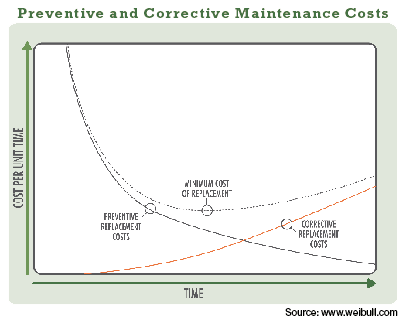Essential Boiler Preventive Maintenance
A fundamentally sound boiler PM program basically involves three steps: fireside maintenance, waterside maintenance, and system diagnostics.
Fireside maintenance consists of manually cleaning particulates that accumulate on the fireside of the boiler. This process increases as the heat gets absorbed and makes the system more efficient. It also helps maintain proper emissions. Excessive sooting results from incomplete combustion. If technicians notice it while cleaning, it might indicate they need to fine-tune the fuel-to-air mixture.
Waterside maintenance requires daily monitoring of feedwater quality. Technicians should monitor feedwater to ensure low levels of silica, total dissolved solids (TDS), alkalinity, oily matter and iron. A waterside program also should eliminate dissolved oxygen to help prevent corrosion and pitting.
System Diagnostics
Managers also should implement several diagnostic techniques as a part of a boiler PM program that can extend boiler life and increase efficiency. Techniques include but are not limited to:
- Installing meters on makeup water lines to monitor flow. If the system is closed-loop, installing meters in the system helps detect leaks.
- Blowing down routinely without overdoing it. Excessive blow-down wastes water, chemicals and energy. Where possible, install an automatic surface conductivity blowdown system to accurately control TDS while optimizing energy recovery.
- Checking the boiler's chemical make-up routinely.
- Inspecting steam traps and steam lines routinely for leaks.
- Tuning boilers regularly to optimize performance. Optimal boiler performance correlate strongly with reduced wear on components.
- Checking insulation on piping and storage tanks.
- Inspecting condensate pumps to ensure they work efficiently.
- Cleaning and inspecting water and fire tubes regularly to reduce scaling.
- Checking safeties, including primary and auxiliary low-water cutoffs, gauge glass, pressure controls, scanners, and pressure switches.
Implementing a PM program for fire-tube or water-tube steam boilers keeps a facility running smoothly. It also can lead to the more efficient use of water and energy, creating savings that can more than pay for the program.
Ryan T. Evans, P.E., MBA, LEED® AP BD+C is a mechanical engineer and sustainability consultant for Henderson Engineers in Kansas City. He specializes on energy and durability issues and assists his clients with financial analyses of capital improvement projects. As a designer of steam systems for his institutional clients, he helps identify operations and maintenance measures for improving boilers life, efficiency and safety.

Click for larger PDF
Related Topics:











